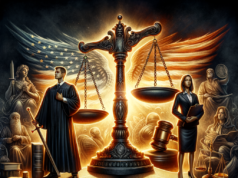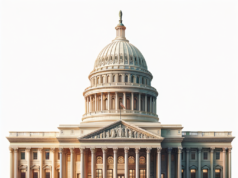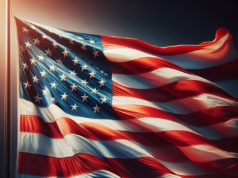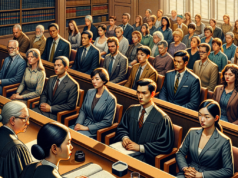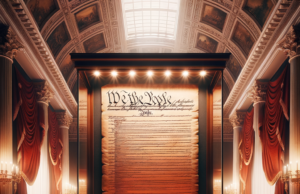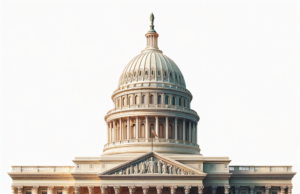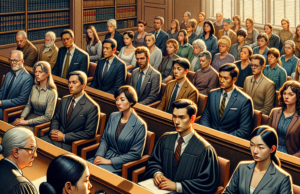Contents
- 1 Understanding the Current Landscape of Gun Control Legislation in America
- 2 Historical Context: The Evolution of Gun Control Debates Over the Decades
- 3 Key Players in the Gun Control Movement: Advocates and Opponents
- 4 Recent Legislative Efforts: Analyzing Proposed Bills and Their Implications
- 5 Public Opinion and Its Influence on Gun Control Legislation Today
- 6 The Path Forward: Strategies for Effective Gun Control Advocacy and Reform
The debate over gun control in the United States has reached a critical juncture, as the nation grapples with a series of mass shootings and rising gun violence. Advocates for stricter gun laws argue that immediate action is necessary to protect public safety, while opponents assert that such measures infringe upon constitutional rights. This article unpacks the urgency surrounding gun control legislation today, exploring the current landscape, historical context, key players, recent legislative efforts, public opinion, and strategies for effective advocacy.
Understanding the Current Landscape of Gun Control Legislation in America
The current landscape of gun control legislation in America is characterized by a patchwork of state and federal laws that vary significantly across the country. Following a series of high-profile mass shootings, there has been a renewed push for comprehensive gun reform, including measures such as universal background checks, assault weapon bans, and red flag laws. While some states have enacted stricter regulations, others have moved in the opposite direction, loosening restrictions on gun ownership. The divide between urban and rural perspectives on gun rights further complicates the legislative process, as policymakers navigate a complex web of public sentiment, political pressure, and constitutional considerations.
Historical Context: The Evolution of Gun Control Debates Over the Decades
The gun control debate in the United States has evolved significantly over the decades, shaped by historical events, cultural shifts, and changing societal norms. The National Firearms Act of 1934 marked one of the earliest federal attempts to regulate firearms, targeting machine guns and sawed-off shotguns in response to organized crime. The Gun Control Act of 1968 followed, establishing a framework for regulating gun sales and ownership. However, the modern gun control movement gained momentum in the 1990s, particularly after the tragic Columbine High School shooting in 1999. Since then, the frequency of mass shootings has intensified the debate, leading to a polarized political environment where gun control remains one of the most contentious issues in American society.
Key Players in the Gun Control Movement: Advocates and Opponents
The gun control movement is marked by a diverse array of key players, including advocacy groups, lawmakers, and grassroots organizations. Prominent organizations such as Everytown for Gun Safety and the Brady Campaign to Prevent Gun Violence have emerged as leading voices for reform, mobilizing public support and lobbying for legislative change. On the opposing side, the National Rifle Association (NRA) remains a powerful force, advocating for gun rights and opposing any measures perceived as infringing upon the Second Amendment. Additionally, individual lawmakers play a crucial role in shaping the discourse, with some championing gun control initiatives while others staunchly defend gun rights, reflecting the deeply entrenched divisions within American politics.
Recent Legislative Efforts: Analyzing Proposed Bills and Their Implications
In recent months, several legislative efforts have been introduced at both the federal and state levels aimed at addressing gun violence. Notable proposals include the Background Check Expansion Act, which seeks to close loopholes in existing background check laws, and the Assault Weapons Ban, aimed at prohibiting the sale of military-style firearms. While some states have successfully passed measures such as red flag laws, which allow law enforcement to temporarily remove firearms from individuals deemed a threat, federal efforts have faced significant hurdles in Congress. The implications of these proposed bills are profound, as they not only reflect the urgency of addressing gun violence but also highlight the ongoing struggle between public safety and individual rights.
Public Opinion and Its Influence on Gun Control Legislation Today
Public opinion plays a pivotal role in shaping gun control legislation, with polls consistently indicating that a majority of Americans support stricter gun laws. However, this support is often nuanced, with many individuals advocating for specific measures rather than a blanket approach to gun control. The influence of public sentiment is evident in the responses of lawmakers, particularly in the wake of mass shootings, when calls for reform often intensify. Yet, the polarization of the issue means that public opinion can also be a double-edged sword, as vocal opposition from gun rights advocates can deter politicians from pursuing comprehensive reform. Understanding the complexities of public opinion is essential for advocates seeking to drive meaningful change in gun legislation.
The Path Forward: Strategies for Effective Gun Control Advocacy and Reform
As the battle for gun control legislation continues, advocates must employ strategic approaches to foster effective reform. Building coalitions across diverse communities, engaging in grassroots mobilization, and leveraging social media platforms are essential tactics for amplifying the call for change. Additionally, focusing on evidence-based policies and emphasizing the importance of public safety can help bridge the divide between opposing factions. Educating the public about the implications of gun violence and the benefits of proposed reforms is crucial for garnering widespread support. Ultimately, a multifaceted approach that combines advocacy, education, and collaboration will be vital in navigating the complexities of gun control legislation and achieving meaningful reform.
The urgency surrounding gun control legislation in America reflects a broader societal struggle to balance individual rights with the imperative of public safety. As the debate continues to evolve, understanding the historical context, key players, and public sentiment will be essential for advocates seeking to effect change. By employing strategic advocacy efforts and fostering dialogue, there remains hope for a future where gun violence is significantly reduced, and the rights of responsible gun owners are respected. The path forward may be fraught with challenges, but the commitment to addressing this critical issue remains unwavering.




